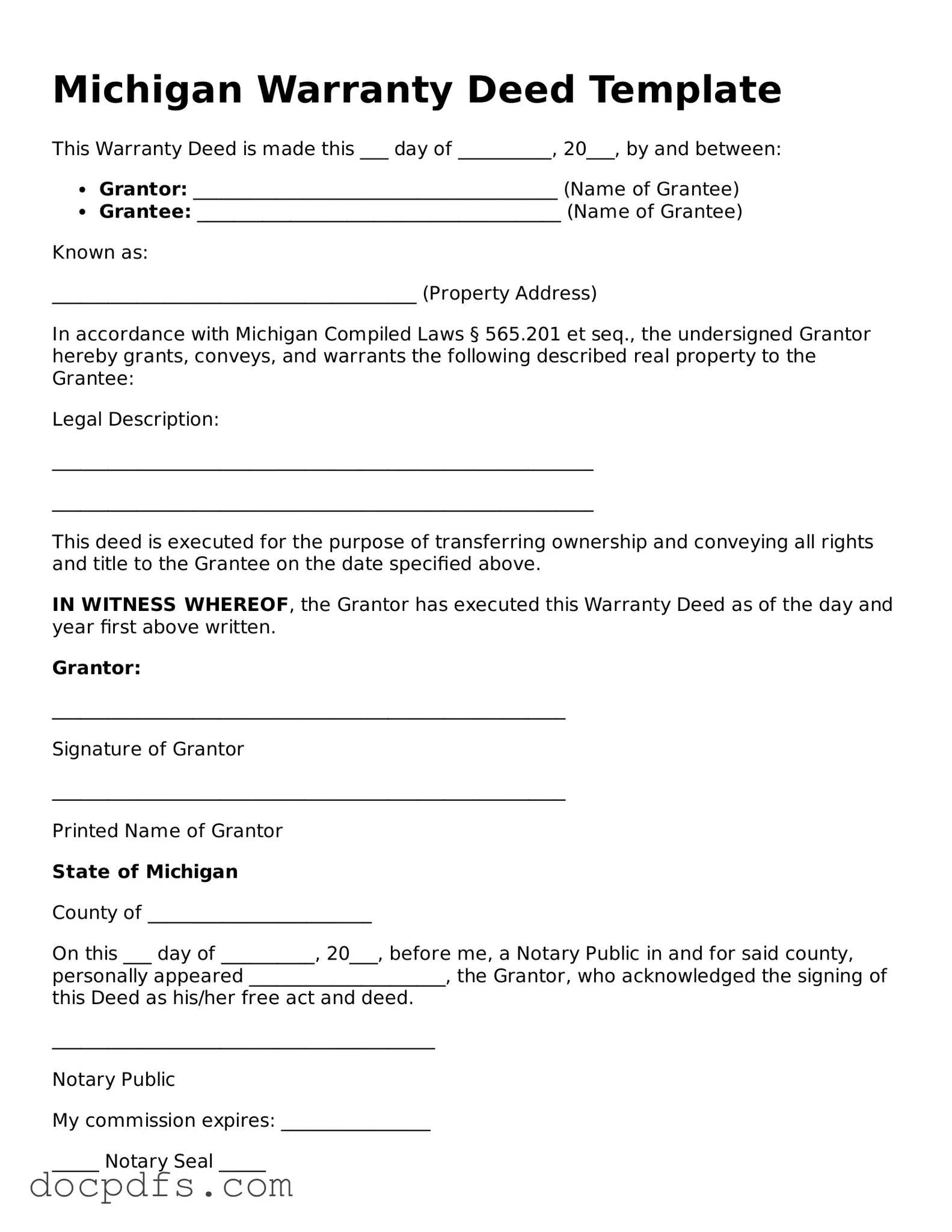The Michigan Deed form serves as a crucial legal document in real estate transactions, facilitating the transfer of property ownership from one party to another. It encompasses essential details such as the names of the grantor and grantee, a clear description of the property being transferred, and the terms of the conveyance. This form is not merely a formality; it plays a significant role in ensuring that the transfer is legally binding and recognized by the state. Different types of deeds exist in Michigan, including warranty deeds and quitclaim deeds, each serving specific purposes and offering varying levels of protection to the parties involved. Furthermore, the form must be properly executed, which involves signatures and, in some cases, notarization to validate the transaction. Understanding the intricacies of the Michigan Deed form is vital for both buyers and sellers, as it helps safeguard their interests and provides clarity in what can often be a complex process. With a firm grasp of its components and requirements, individuals can navigate property transfers with confidence, ensuring that their rights are protected throughout the transaction.
